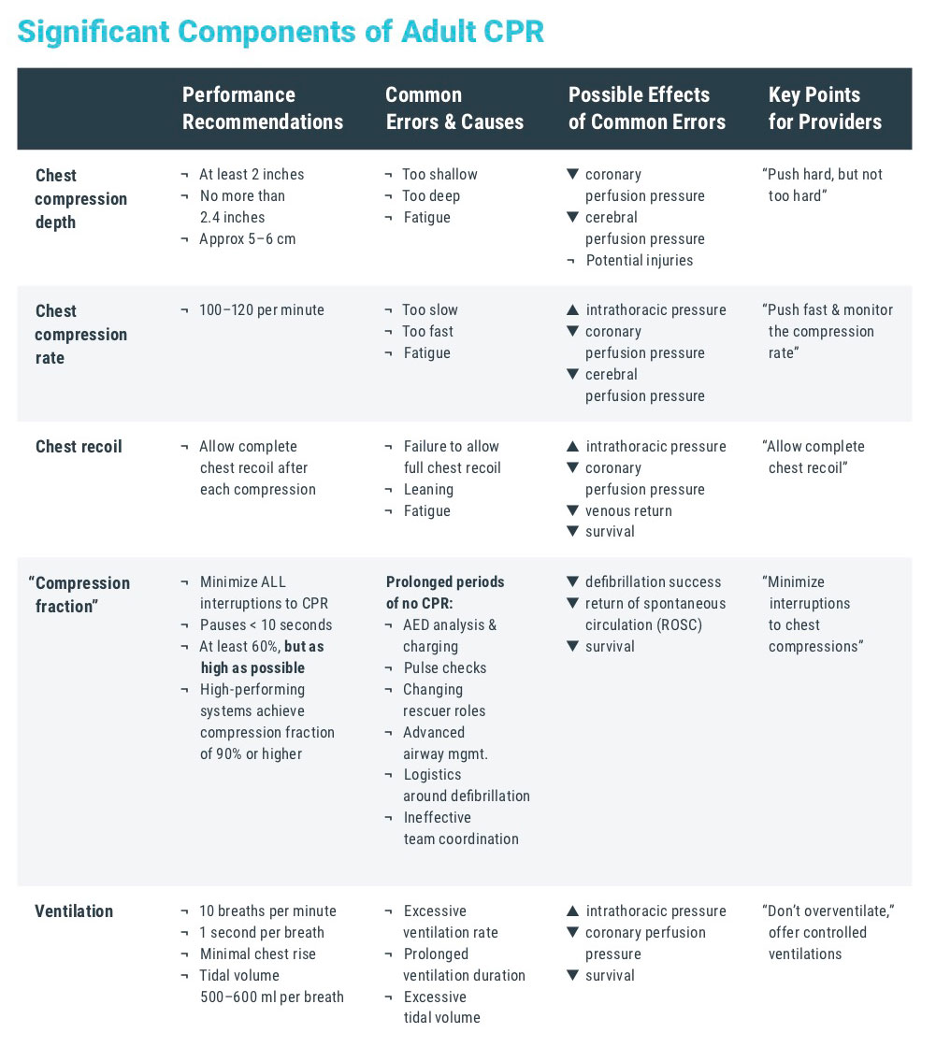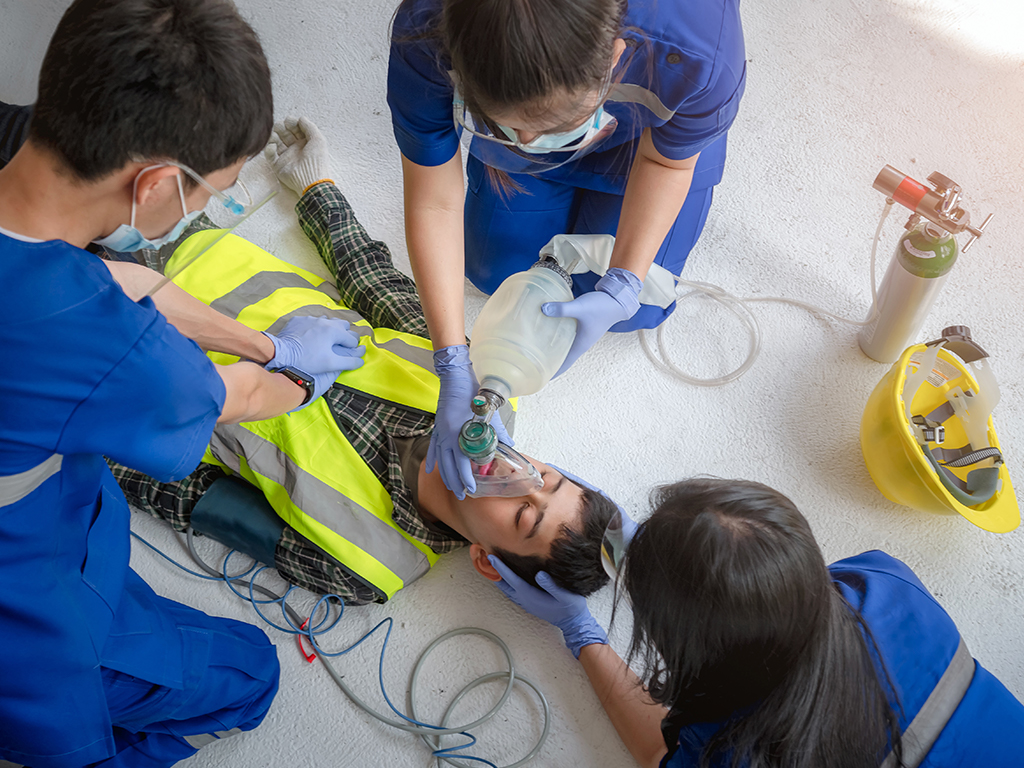For Healthcare Professionals
4. Prehospital Care
Pushing Peak Performance
Out-of-hospital cardiac arrest (OHCA) is the most time critical, time dependent condition a professional prehospital emergency care provider can address. Prehospital providers can give a significant boost to OHCA survival prospects by helping create a high-performance cardiopulmonary resuscitation (HP-CPR) environment that is based on a commitment to measure and improve the quality of care delivery. Through participation in Texas-CARES, agencies can take significant steps in strengthening this commitment and providing a necessary foundation for HP-CPR.
HP-CPR is an expertly-performed, choreographed, and measured OHCA response consisting of individual and team performance that meets or exceeds current evidence-based performance recommendations. These guidelines for adult patients include:
- Compression rate of 100–120 compressions per minute;
- Compression depth average of 2–2.4 inches;
- Full recoil of chest wall after compression;
- Compression fraction, or time in CPR, as high as possible but at least 60% with pauses of less than 10 seconds; and,
- Ventilation rate of 10 breaths per minute with tidal volume of 500–600 ml per breath.
Common quality issues that hinder HP-CPR include: shallow compressions insufficiently delivered due to fatigue; excessive pauses in frequency and duration because challenges in defibrillation logistics, team coordination, and/or delivery of secondary interventions; incomplete recoil due to leaning and/or fatigue; and excessive ventilation in frequency, duration, and/or volume due to inadequate monitoring.
CPR LifeLinks largely informs how Texas-CARES can further assist prehospital providers with HP-CPR. As a quality improvement implementation toolkit published in 2019, CPR LifeLinks is a response to the 2015 IOM report “Strategies to Improve Cardiac Arrest Survival: A Time to Act” with expert consensus on best practice recommendations and guidelines for HP-CPR training and implementation by prehospital emergency care providers. Successful implementation of the toolkit’s HP-CPR component will help first responders work toward achieving national performance recommendations by allowing them to 1) know the evidence-based recommendations, 2) master compression rate, depth, and recoil, 3) prevent CPR over-ventilation, 4) optimize teamwork to minimize pauses, and 5) measure and improve performance.


